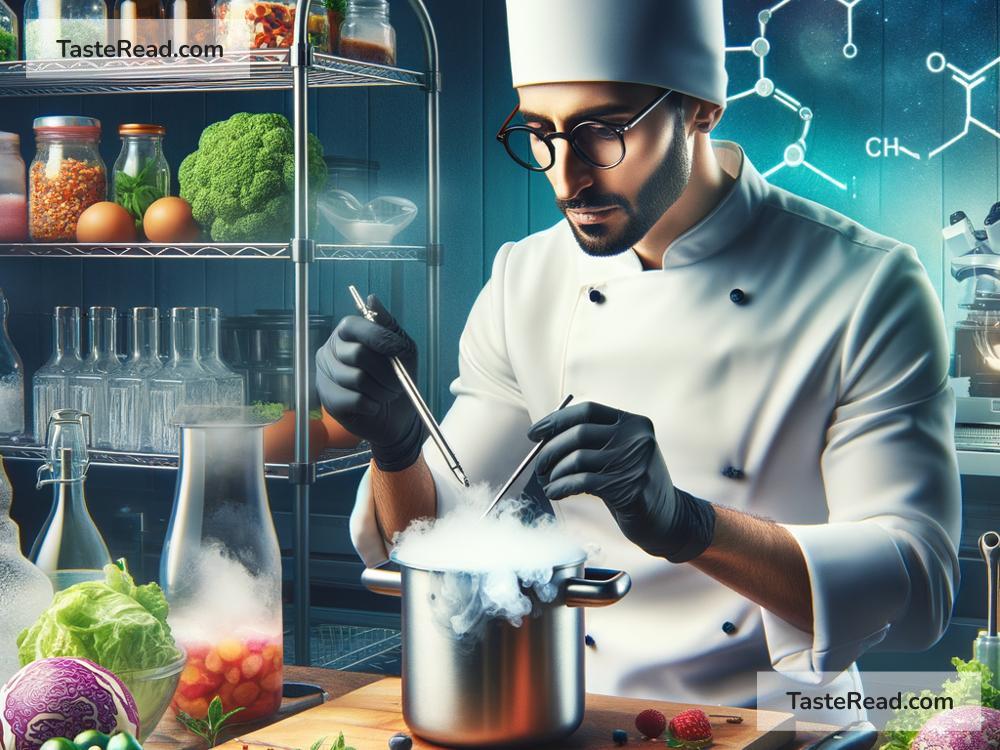The Science of Cooking with Cold: Techniques and Tips
Cooking isn’t just about heat – there’s another end of the spectrum that is just as fascinating: cooking with cold. Cold temperatures can transform food in unique ways, making the science of cooking with cold a vital part of culinary arts. From chilling to freezing, understanding how cold affects food can help you master new techniques, enhance flavors, and preserve food. Let’s dive into the science behind cooking with cold and learn some handy tips.
How Cold Changes the Way Food Behaves
Cold temperatures slow down chemical reactions in food. When food is chilled or frozen, processes like bacteria growth, oxidation, and enzymatic activity are slowed or stopped altogether. That means cold is not only a great way to preserve food but also a way to manipulate textures and flavors.
For example, when you freeze water, it expands into ice, making it solid and hard. In food, this principle can work wonders. Ice crystals formed during freezing can change the texture of your favorite food, whether it’s creamy ice cream or crispy frozen fruit.
Cold Techniques in Cooking
Here are some of the most common ways cooks use cold in the kitchen and the science behind them:
1. Freezing
Freezing is more than just a way to store food for later – it’s a tool to transform textures and even preserve flavors. For example, frozen grapes or berries become sweeter and juicier because the cold affects the fruit’s water and sugar content. Similarly, freezing dough or butter makes it easier to handle in baking, leading to crisp, flaky pastries.
Tip: When freezing food, use airtight containers or plastic wrap to prevent freezer burn. Freezer burn happens when moisture evaporates, leaving dry or discolored spots.
2. Chilling
Chilling is commonly used to keep food fresh or prepare dishes like salads, desserts, or cold beverages. Beyond freshness, chilling can be used to create specific textures. Soft whipped cream or custards hold their shape better when cold. Likewise, chilled chocolate hardens beautifully in desserts.
Tip: When chilling ingredients for cooking, like butter or cream, make sure they’re uniformly cold for consistent results. For example, cold butter can help create flaky croissants in baking because it keeps the dough layers separate.
3. Ice Bath
An ice bath is a technique where food is rapidly cooled by plunging it into a bowl of ice water. This is often used for cooking vegetables. After boiling or blanching, dipping vegetables into an ice bath stops the cooking process instantly. This locks in bright colors, crisp textures, and fresh flavors.
Tip: Ice baths are perfect for soft-boiled eggs or blanched green beans. Always make sure you have enough ice in the water to maintain a low temperature during cooling.
4. Making Ice Cream
Ice cream is a fun example of using cold in cooking. By freezing a creamy mixture of milk, cream, sugar, and flavoring, the water content turns into tiny ice crystals. The smoother the ice cream, the smaller the ice crystals. That’s why stirring or churning during freezing is critical – it helps break the ice crystals and makes your ice cream creamy instead of icy.
Tip: If you’re making ice cream at home, using a pre-chilled bowl or ice cream machine will help keep the temperature even as your mixture freezes.
5. Infusion with Cold
Cold infusions are a slower but subtle way to flavor food or beverages. For example, steeping tea in cold water instead of hot creates a lighter, sweeter flavor because fewer tannins are released. Cold brewing coffee is another popular method that produces a smooth, low-acid drink. Cold temperatures gently extract flavors without heat-triggered bitterness.
Tip: Cold brewing coffee takes longer than hot brewing – around 12 to 24 hours – but the results are worth it.
How to Use Cold in Your Everyday Cooking
Cold cooking techniques can elevate your cooking, prevent mistakes, and delight your taste buds. Here are some easy tips:
-
Plan Ahead for Freezing: Freeze fruits like bananas or berries to use in smoothies. Freeze butter for baking or fresh herbs mixed with olive oil in ice cube trays.
-
Cool Before Cooking: Bring all your ingredients – especially dough – to the right temperature before using. Cold butter, cream, or eggs can make baking more successful.
-
Experiment with Cold Drinks: Try infusing water with fruits and herbs in the fridge. Or make your own cold brew tea and coffee.
-
Use Ice for Crispy Vegetables: Preserve the crunch in boiled vegetables by dipping them in an ice bath right after cooking.
Keeping Food Safe with Cold
Besides creativity in cooking, cold temperatures keep food safe. Refrigerators slow bacteria growth, and freezers stop it almost entirely. Always use designated chilling or freezing zones for leftover food and fresh ingredients. Use labels with dates so you know how long food has been stored, and avoid refreezing thawed food to maintain quality.
Wrapping Up
Cooking with cold isn’t just about keeping food fresh – it’s about unlocking new possibilities in the kitchen. Freezing, chilling, and using ice all have unique effects on flavor, texture, and preservation. By understanding the science of cold, you can make your cooking smarter, tastier, and more fun. Whether it’s a scoop of homemade ice cream or a refreshing glass of cold brew coffee, cold techniques invite you to explore a different side of culinary creativity.
So next time you open your freezer or refrigerator, think of it as a tool for innovation, not just preservation!


